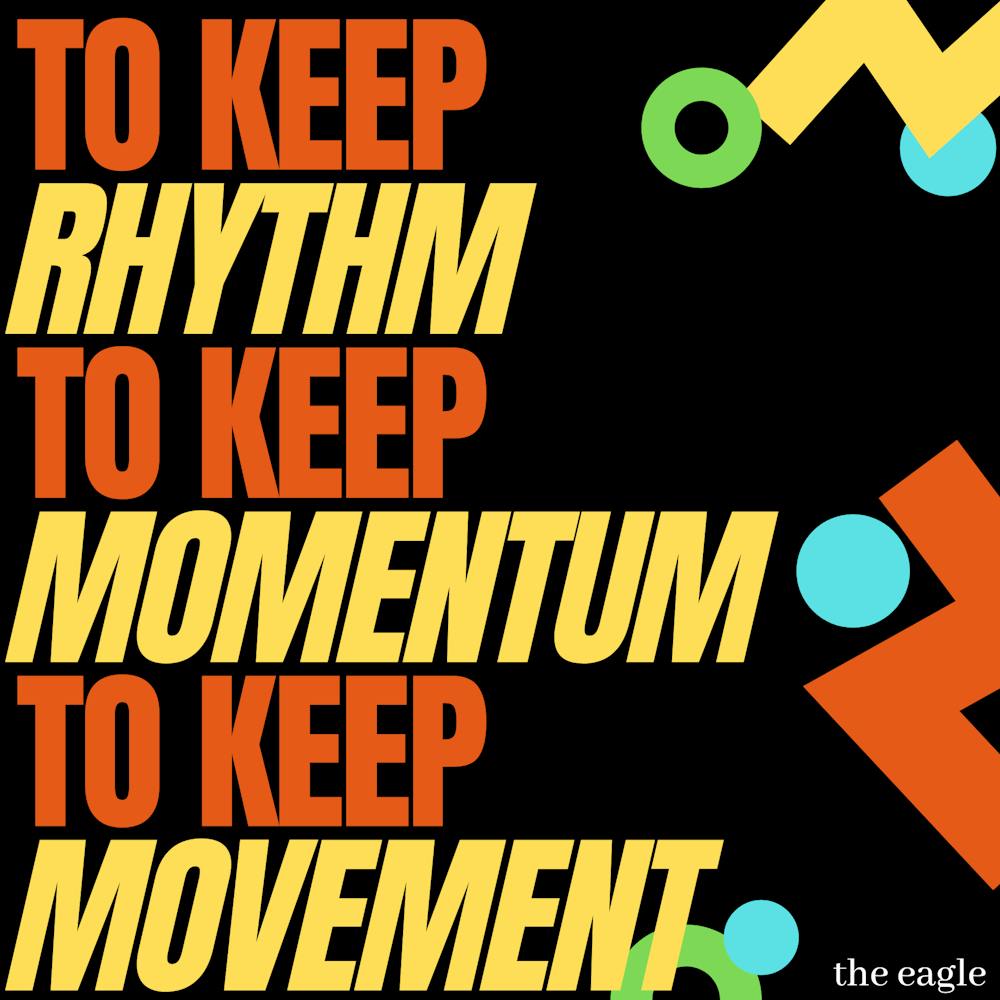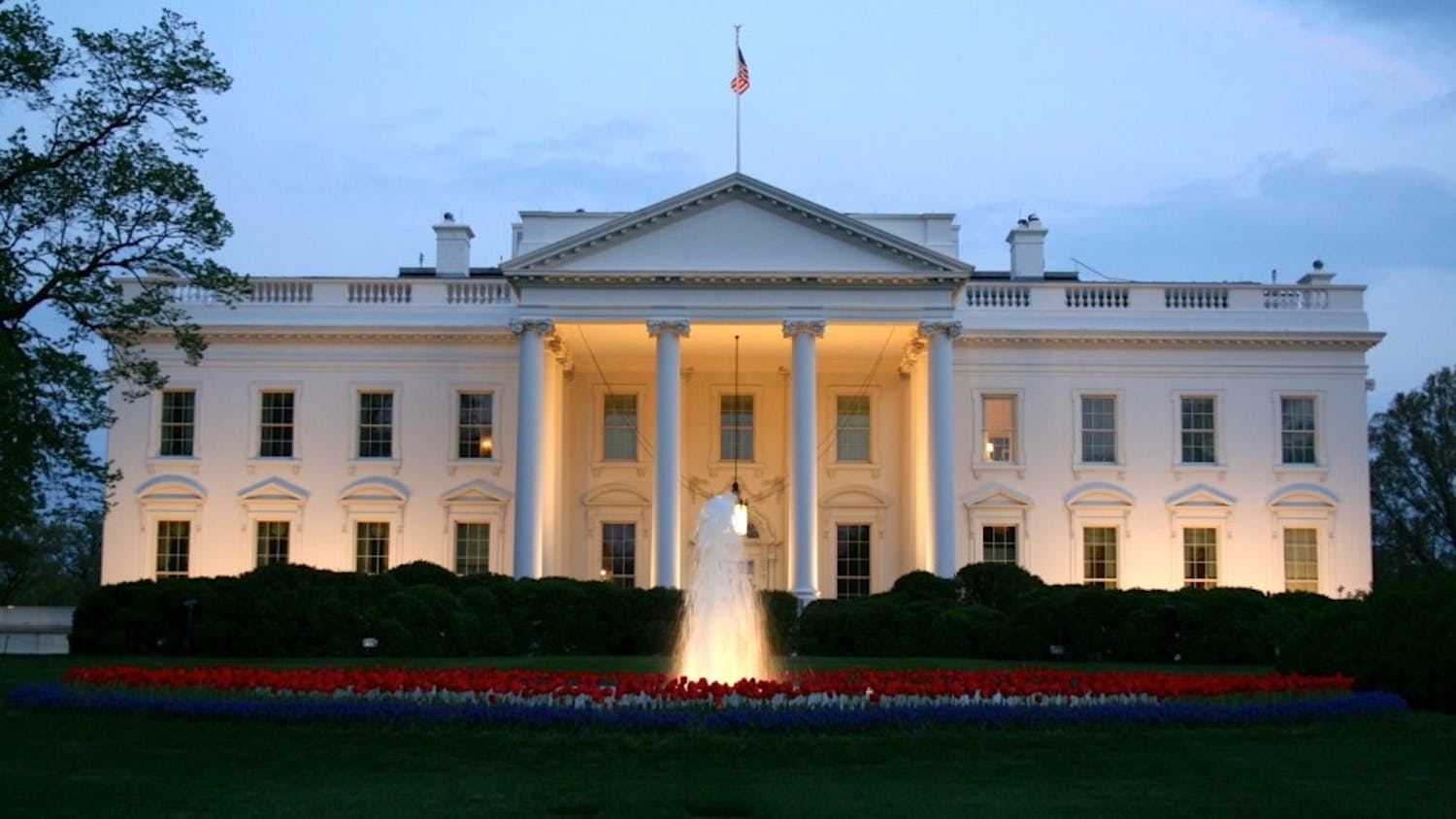While she is not sure how it happened, AU’s African-American and African Diaspora Studies program director and Department of Performing Arts professor Sybil Roberts Williams remembered hearing and seeing more posts about Kendrick Lamar’s song “Alright” after Donald Trump won the 2016 election.
“I heard it in the street the night he won,” Roberts Williams said. “Then, I went on my Instagram and all my folks were quoting Kendrick. Somehow right from that moment, that is the song that people latched onto.”
Lamar’s Grammy-awarded “Alright” from his album “To Pimp a Butterfly” became a protest song in Black resistance movements when it emerged in 2015 and it continues to be used as a musical backdrop for protests today.
Omékongo Dibinga, a rapper, spoken word artist, scholar on Jay-Z and professor of intercultural communication in the School of International Service, believes that the song’s ongoing relevance in 2020 is due to its lyrics.
“You're constantly saying half the song, ‘We gon’ be alright. We gon’ be alright,’” Dibinga said. “‘Do you hear me? Do you feel me?’ Right now, people want to be heard. They want to be felt.”
When protesters chant, “We gon’ be alright,” Roberts Williams thinks for many it is comforting, and “in some cases, it’s an actual taunt. ... We know how to survive, do you?”
“You [also] got the lyrics in there about hating police, which is a common sentiment with many people right now,” Dibinga added. “‘And we hate po-po, wanna kill us dead in the street for sure.’ We just saw that with George Floyd. So, on many levels for some people, this was also prophetic.”
Dibinga reminds protesters that music in resistance movements is not a new idea but rather a continuum.
“A lot of other people, particularly younger protesters out there, feel like this is the first time that music with a message that’s speaking to this or that — no. The wheel is being reinvented,” Dibinga said.
Both Roberts Williams and Dibinga believe Lamar’s “Alright” achieves this spiritual message. Roberts Williams said that songs like Lamar’s that send a message of “hope and transcendence” , rather than just name the problems, is where she sees real opposition.
Dibinga said, “Resistance music, in short, is music that speaks truth to power.”
When identifying resistance songs, Kendra Salois, an assistant professor of ethnomusicology in the Department of Performing Arts, believes that it depends on the explicitness of the artist’s lyrics and the listeners’ backgrounds. She said hip-hop is a genre that often has oppositional messages.
“N.W.A.’s ‘F--- tha Police’ is pretty explicit. Sometimes they're not,” Salois said. “Sometimes artists are inviting you to go do your homework.”
Jason Ottley, the conference director of AU’s Summer Institute on Education, Equity and Justice and an adjunct professor in The Department of Critical Race, Gender and Culture Studies, named hip-hop as a genre he believes is often resistance music and described it as a movement.
“If you look at the lyrics and you look at the times that the old school rappers and artists were talking about … then it’s almost synonymous to some of the same language that they’re using now, talking about racism and talking about not having proper education, resources [and] police brutality,” Ottley said.
When music is invoked during protests, Salois said, “It’s very easy to feel like you're participating, [that] you're part of something bigger than yourself when music is involved.”
Ottley learned the power of music at church.
“As a kid, five, six years old, I learned that that's what you do when you come together in community, you sing,” Ottley said. “We sing in concert because it shows unity, and unity is not based on race. Unity is all people.”
Roberts Williams discussed how West African work and fishing songs brought to the United States by enslaved Africans later became prison camp songs and were used “to keep rhythm, to keep momentum [and] to keep movement.”
To understand how Black musicians are still creating similar spiritual pieces like the ones from decades before, one has to hear the music’s roots. The history of music made by Black artists is long and revolutionary. The following just scratches the surface of how Black artists have kept with the movement.
Negro spirituals
The four professors noted that music’s long life in Black resistance movements dates back to Negro spirituals by enslaved Africans in the United States in the 18th and 19th centuries.
“Black people were not given the ability to communicate because their language was beaten out of them,” Dibinga said. “One of the things that became popular was the ability to communicate through the drum.”
Roberts Williams said Negro spirituals were “metaphorically and literally escape songs.”
“Metaphorically, because they were talking about when the Lord comes, ‘He will remove me from this situation,’” she said. “At the same time, we know that they're also talking about the possibility of escaping.”
Roberts Williams said that the metaphorical lyrics of the spiritual “Swing Low, Sweet Chariot” depict the story from Ezekiel, a religious figure who envisioned a chariot being sent down to send the faithful into heaven. The literal lyrics code the location of a key Underground Railroad station.
“These are messages that, if white people were aware of them, could result in people being arrested, or physically maimed or killed,” Salois said.
Blues
Roberts Williams called the blues, a genre born in the 19th century and based on a West African music scale, the “backbone of all American music.”
“What we're looking at is the idea of feeling blue as a way that enslaved Africans had to really give voice to deep injustice,” Roberts Williams said. “There are deep blues songs that have all kinds of other messages about how the Africans’ world view shaped the thinking of African- Americans from slavery right up through the sixties.”
The blues also brought out many joyful songs. Roberts Williams cited Buddy Guy’s “(I’m Your) Hoochie Coochie Man.”
By singing about his ability to become great, Guy is “giving African-Americans strength,” Roberts Williams said.
Jazz
Jazz, according to Roberts Williams, is a resistance form for many reasons. She noted that jazz musicians such as John Coltrane, Thelonious Monk, Charlie Parker and Max Roach began to include the 1960s civil rights movement in their music.
Salois said that during the civil rights movement, Black Americans protested with songs based on Negro spirituals. The Student Nonviolent Coordinating Committee Freedom Singers were a quartet that would go around to different towns and cities to help others organize through song.
“They would change the words to fit whatever the situation was,” Salois said, adding that people used those lyrics in marches.
Rhythm and blues & soul
Salois cited Ricky Vincent, the author who wrote “Party Music: The Inside Story of the Black Panthers' Band and How Black Power Transformed Soul Music” that describes how Black Panther Party members formed a rhyme and blues group called “The Lumpen” that performed renditions of songs by Black artists at rallies in the early ‘70s.
“They would take Motown or Smokey Robinson or various songs that were popular at the time and change the words to fit the tenants of Black Panther ideologies,” Salois said.
Roberts Williams talked about soul music, particularly Stevie Wonder’s “Living For The City,” which reflects urban poverty after the civil rights movement. The song’s protagonist is falsely arrested for a crime and sent to prison for 10 years, which Roberts Williams thinks echoes now when we are still facing unjust policing and an unjust criminal justice system.
Hip-hop
During the beginning of the hip-hop movement in the late 1970s, groups, such as Grandmaster Flash and the Furious Five with their song “The Message,” started creating music about the Bronx.
“Hip-hop was a mini-newspaper,” Roberts Williams said. Because of hip-hop’s ability to report injustice and travel among communities, “All of a sudden, all of America is aware during the Reagan era of what created these conditions in the city that are basically making life unlivable for a number of African -Americans,” Roberts Williams said.
All four professors also cited N.W.A.’s “F--- tha Police.” It was acknowledged that N.W.A.’s misogyny and homophobia are not acceptable, and the group should be held accountable, yet all four professors explained that “F--- tha Police” spoke to deeper problems with the Los Angeles Police Department.
“Most people were shocked and outraged by N.W.A, but they missed the point,” Roberts Williams said. “The point is, they were talking about policing by LAPD that was deeply problematic.”
Roberts Williams sees the reflection of early hip-hop in music produced by Black musicians today, citing how J Cole’s “Crooked Smile” reflects the same “informal reporting of what's happening in most cities” that occurred in the ‘70s.
The professors said that consumers must continue to critically engage with resistance music outside of protests. Roberts Williams suggested that people curate and share playlists.
Getting the full picture of what music means to current Black resistance movements can’t happen just yet, according to Salois, who explained that it took decades to compile documentation of music in the civil rights movement.
“Thirty, 40, 50 years from now,” Salois said, during an interview on June 19. “I'm really looking forward to being able to ask people who were at Lafayette Square over the last three weeks: What does that [song] mean to you? What does the music that you learned, and that you heard, and that you sang, and you danced to, what did that mean to you then? What do you think it means now?”





